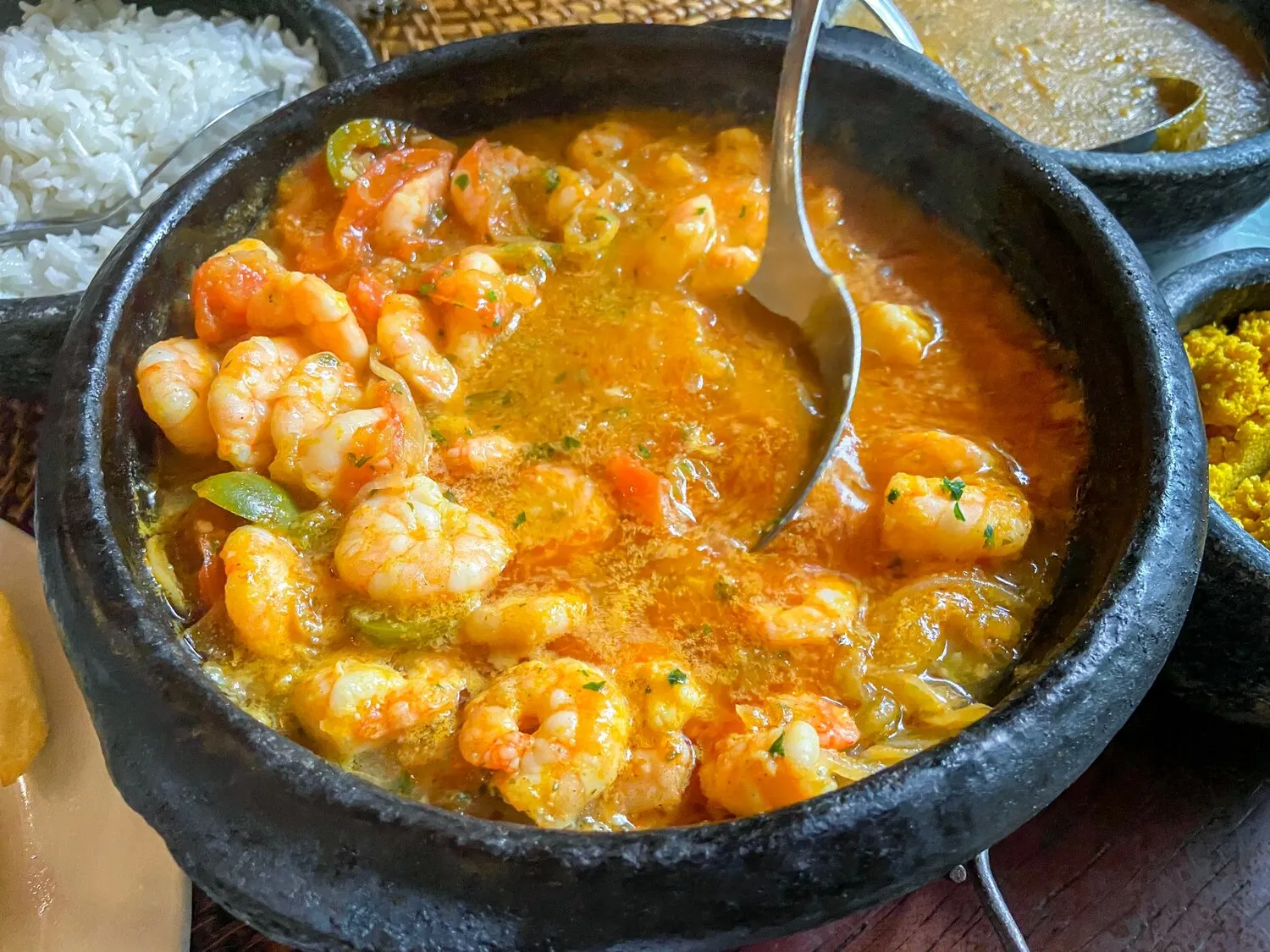
Moqueca de Camarão
Shrimp moqueca.
Nutrition Facts
* The % Daily Value (DV) tells you how much a nutrient in a serving of food contributes to a daily diet. 2,000 calories a day is used for general nutrition advice.
Moqueca's origins trace back to indigenous Brazilian cooking methods, later influenced by African and Portuguese cuisines. Indigenous peoples used leaves to cook fish, while enslaved Africans brought coconut milk and palm oil (dendê oil) to the mix. Portuguese colonizers likely added tomatoes, onions, and peppers.
Moqueca is deeply rooted in Brazilian coastal culture, particularly in the states of Bahia and Espírito Santo, where regional variations exist. It's a dish often shared among family and friends, representing community and culinary heritage.
Regional Variations
Bahia's moqueca includes dendê oil and coconut milk, giving it a distinctive orange color and flavor. Espírito Santo's version (Moqueca Capixaba) omits dendê oil, resulting in a lighter flavor and color. Both are integral to their respective regional identities.
Celebratory Dish
Moqueca is often served during special occasions and family gatherings, symbolizing abundance and togetherness. It's a dish that brings people together around the table.
Symbol of Coastal Heritage
Moqueca represents the connection between Brazilians and the sea. The use of fresh seafood and locally sourced ingredients highlights the importance of the ocean in Brazilian culture.
Moqueca de Camarão is a rich and savory seafood stew characterized by its vibrant flavors and creamy texture. The dominant flavors are derived from shrimp, coconut milk, tomatoes, peppers, onions, and the distinctive taste of dendê oil, if used. Fresh herbs like cilantro add brightness and freshness.
The core flavor profile hinges on the sweetness of fresh shrimp, balanced by the acidity of tomatoes and peppers. Coconut milk contributes richness and a subtle sweetness, while onions and garlic provide an aromatic base. Dendê oil imparts a unique, slightly earthy, and subtly spicy flavor, as well as a vibrant orange color. Lime juice, often added at the end, brightens the entire dish.
Freshness is Key
Use the freshest shrimp available. The quality of the shrimp directly impacts the flavor of the moqueca.
Don't Overcook the Shrimp
Cook the shrimp just until they turn pink and opaque. Overcooked shrimp will be tough and rubbery.
Simmer Gently
Allow the moqueca to simmer gently, allowing the flavors to meld together without burning. Avoid high heat.
Layer Flavors
Build the flavors gradually by sautéing the aromatics (onions, garlic, peppers) before adding the shrimp and liquids. This helps develop a deeper, more complex flavor profile.
Dendê Oil Alternative
If you can't find dendê oil, you can substitute with a mixture of annatto oil (for color) and a small amount of paprika for a hint of earthiness and spice. However, the flavor will be different.
Explore additional Moqueca dishes and restaurants
Explore MoquecaDiscover top dining spots and culinary experiences in São Luís.
Explore São LuísLearn more about the food culture, restaurant scene, and culinary heritage of Brazil.
Explore Brazil